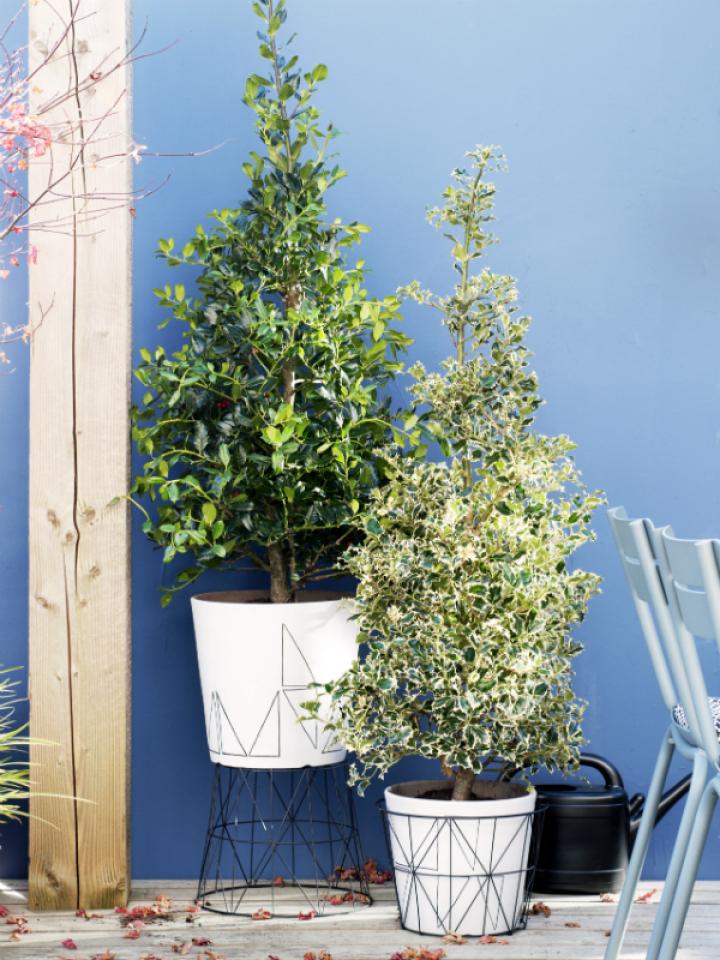16 Oct Ilex the beauty of autumn
Colours and shapes

Ilex catches the eye immediately with its shiny or matte serrated leaves – in either variegated or plain green – often with bright red berries. As an evergreen shrub it’s a popular hedge or bush, which can reach a height of between 2 and 25m depending on the variety. The white flowers which appear in May and June are modest, whilst the berries that appear in autumn are spectacular. If you want lots of red berries, you need to place a male plant amidst the female specimens. If you have a small garden, it’s best to opt for a self-pollinating variety.
Origin
Ilex is a genus of some 400 to 600 species within the Aquifoliaceae family. In the wild the plant grows well in regions with a temperate or subtropical climate, from high in the mountains right down to coastline. The shrub occurs in Asia, Europe, North Africa and North and South America. Ilex has been around for a very long time – the ancestral form of today’s Ilex is some 50 million years old. Trendy Ilex verticillata is a deciduous Ilex. The berries remain on the branches to provide attractive autumn decorations.
Symbolism
The Latin name Ilex is derived from the Quercus ilex, also known as the holm oak. That’s an evergreen oak with leaves of that closely resemble Ilex. The modern name dates from Germanic times: holegn, houx), hulis/huls (Germanic) have been corrupted into Ilex, hulst and hülsen respectively. Ilex plays an important symbolic role in all European cultures, appearing in many ancient images. As an evergreen it symbolises hope and new life all everywhere.


